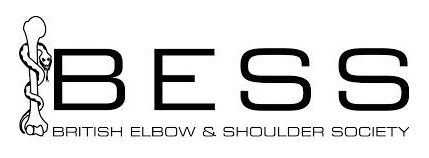CrossFit has exploded in popularity since its inception in 2000, captivating fitness enthusiasts with its unique blend of high-intensity workouts and community-driven culture. As with any high-intensity training program, there is a risk of musculoskeletal injury, and the shoulder joint is particularly prone to injury. I have seen an increasing number of people presenting to my clinic with shoulder injuries sustained during CrossFit training.
In this article, I will explore the origins and increasing popularity of the sport and discuss common CrossFit shoulder injuries. I will also discuss recent scientific studies on CrossFit injuries, particularly those affecting the shoulders, and offer insights into prevention and recovery. The aim is not to put you off CrossFit but to give you tips to avoid injury and advice on what to do if you hurt your shoulder.
What Is CrossFit?
CrossFit is a branded fitness program founded by Greg Glassman in 2000 that merges high-intensity training with functional multi-joint movement. The program combines elements of weightlifting, aerobic exercises, gymnastics, and functional movements, all performed at high intensity. CrossFit workouts, known as WODs (Workouts of the Day), are structured to push individuals to their limits. These workouts often involve other exercises like squats, deadlifts, pull-ups, and kettlebell swings to improve strength, endurance, flexibility, and overall fitness.
CrossFit’s unique style involves constantly varied movements, setting it apart from traditional workout programs. No two workouts are the same, which helps to avoid boredom or fitness plateauing and ensures that athletes are continually challenged. CrossFit also emphasises its community, with members often working out together in “boxes” (CrossFit gyms) and encouraging one another to push their limits.
CrossFit’s Popularity and Competitions
CrossFit has grown into a global fitness phenomenon. As of 2025, there are over 15,000 affiliated CrossFit gyms (boxes) worldwide, and the CrossFit Games, an annual competition that began in 2007, has become one of the most prestigious events in the fitness world. The CrossFit Games seek to crown the “Fittest on Earth” by testing athletes across a gruelling range of physical capabilities, including strength, endurance, agility, and mental toughness.
The CrossFit Games have helped fuel the sport’s growth, with millions tuning in to watch athletes perform feats of strength and endurance. Regionals and Open events serve as qualifying rounds, and the competition is fierce, drawing elite athletes from all over the globe.
CrossFit’s competitive aspect is not limited to professionals; several local competitions are organised for regular gym-goers and ‘weekend warriors’ with a wide age range for participants to challenge themselves and improve their fitness. My personal observation is that many patients get bitten by the CrossFit bug and become hooked on attending several sessions each week.
Musculoskeletal Injuries in CrossFit
CrossFit has numerous benefits, including improved cardiovascular health, muscle strength, and community support, but the intensity of its workouts also carries a risk of injury. Participants are encouraged to push harder, lift heavier weights, and perform the exercises quicker, which leads to muscle fatigue and distraction from maintaining correct body posture, thus increasing the risk of injury. Many of these injuries could be avoided by focusing on body alignment throughout the full range of each exercise.
In a recent study of over 3000 CrossFit participants from 42 countries, the overall injury rate was 30%, although smaller studies have reported injury rates of up to 50%. The shoulder was the most commonly injured joint (39%), followed by the back (35%) and knee (15%).
Why Is the Shoulder More Prone to Injury in CrossFit?
The shoulder is a highly mobile and complex joint that allows for a wide range of motion, making it versatile but vulnerable. Many CrossFit exercises, such as overhead presses, snatches, and pull-ups, place significant stress on the shoulder joint and the surrounding muscles, tendons, and ligaments. More advanced CrossFit exercises involve suspending full body weight from fixed bars or mobile rings, further challenging proprioception, balance and strength across the shoulder joint.
Specific exercises, such as the kipping muscle up, in which body weight is dropped quickly whilst the hands hold onto the rings, place tremendous, sudden tension across the joint. If mistimed, the shoulder girdle muscles may struggle to maintain control. When performed incorrectly or with insufficient strength, these movements can lead to various types of shoulder injuries.
Common Shoulder Injuries in CrossFit
- Bursitis – The subacromial bursa is a fluid-filled sac above the rotator cuff muscles surrounding the shoulder joint. It cushions the shoulder joint and facilitates smooth movement. Bursae are found in several locations around the body with moving joints, such as the hip and knee joints. Inflammation in the subacromial bursa can occur from improper posture and repetitive stress, leading to pain and discomfort. This condition is commonly known as impingement syndrome. An MRI or ultrasound scan is necessary to exclude an injury to the rotator cuff (see below). Treatment for bursitis includes pain management with oral anti-inflammatories and physiotherapy. If the pain continues, then a steroid injection can be effective in treating the pain. If the pain still persists after two injections, a small keyhole surgical procedure may be required to shave away the bursa and part of the overlying bone (subacromial decompression). Click here to find out more.
- Rotator Cuff Injury – The rotator cuff muscles are a group of 4 muscles that originate from the scapula (shoulder blade) and surround and insert onto the humerus (arm bone). They centralise the humeral head onto the glenoid (socket) of the scapula, which stabilises the shoulder. Overuse or improper form can lead to overstretching of the rotator cuff muscles. If the force is excessive, rotator cuff tears can occur, which causes pain, limited range of motion and weakness in the shoulder. Any of the rotator cuff tendons may be affected, but the supraspinatus is the most commonly injured tendon. This muscle moves the arm away from the body and up overhead. If there is a tear in the rotator cuff, it is essential to get some imaging to see if it is a full-thickness or partial tear. Partial tears may be managed with pain management and physical therapy. Full-thickness tears will not heal spontaneously and may require surgery to regain full function. It is essential to seek the opinion of a shoulder surgeon early because the tendons can retract and the muscles turn into fat, at which stage it is no longer possible to repair the tendon. Click here to find out more.
- Labral Tears – The glenoid labrum is a rubbery fibrocartilage structure that surrounds the shoulder socket and looks and feels like a Calamari ring. It provides stability to the glenohumeral joint. Damage to the glenoid labrum may be caused by repetitive overhead arm movements, losing control whilst lifting a weight, causing hard twisting of the arm, or sudden trauma, such as falling during a lift. Tearing of the labrum occurs during a shoulder dislocation. This may render the shoulder unstable and prone to further dislocations. Click here to find out more.
Research on CrossFit Shoulder Injuries
- In a survey of 187 Crossfit participants, 44 (23.5%) reported experiencing a shoulder injury in the preceding six months, and 17 of these injuries (38.6%) were exacerbations of pre-existing conditions. A third of these injuries were due to improper form.
- In one study, Crossfit participants with shoulder pain occurring during training showed good function and stability of the shoulder joint, but there was a reduction in the activation of the scapula stabilising muscles, especially the lower trapezius.
- A study of 51 active CrossFit athletes aged between 21-45 years with chronic shoulder pain found that injury to the rotator cuff tendons was common. – 49% had partial lesions of the supraspinatus tendon – 21.6% had labral lesions – 16% had partial lesions of the subscapularis tendon – 17.6% had biceps pulley lesions – 3.9% had partial lesions of the infraspinatus muscle.
Preventing Future Injuries in CrossFit
Preventing CrossFit shoulder injuries requires a combination of proper technique, strength training, and recovery strategies. Here are some key steps to help mitigate the risk of shoulder injuries:
- Focus on Technique – One of the most effective ways to prevent injury is to ensure that every movement is performed with proper form. This is especially important for exercises that place a heavy load on the shoulders, such as the overhead press, bench press, snatches, and pull-ups. Working with a certified CrossFit coach who can provide feedback and corrections is essential to mastering optimal form.
- Warm-up – Sufficient time should be dedicated to slowly stretching and warming the muscles before exercise. Too often, people rush through or completely omit this step, which places the muscle at greater risk of injury with sudden, heavy loading. Muscle fibres behave differently at different rates of loading. If a load is applied slowly, the muscle fibres will elongate gradually. If the load is applied quickly, then muscle tearing can occur. Once the muscle has elongated, it is primed to take heavier loads faster.
- Strengthen Supporting Muscles – Strengthening the muscles around the shoulder joint, particularly the rotator cuff, can help improve stability and reduce the risk of injury. The scapula bone is wholly covered in muscle and is highly mobile. It is essential to incorporate scapula stabilising exercises that focus on increasing the lower trapezius, rhomboids, and serratus anterior muscles to maintain the scapula in a good position while performing the more complex manoeuvres.
- Progress Gradually – One of the main reasons athletes experience shoulder injuries is due to lifting too much weight too soon, or progressing to more complex exercises too quickly. It is tempting to push yourself further in a group setting, either due to encouragement from others or not wanting to appear weak in front of others. Working within your own safe limits is vital to prevent injury that could set you back months.
- Cool Down – This is as important as warm-up. During heavy exercise, blood flow is redistributed to the skeletal muscles. On cessation of exercise, there is transient blood pooling in the muscle groups, which gradually returns to normal flow. Other benefits of cooling down include: – Removal of lactic acid and other metabolic waste products can speed up your recovery and reduce soreness. – Lowers heart rate and blood pressure. – Cooling down while your muscles are still warm can help improve flexibility. -Helps with stress relief: Deep breathing during a cool-down can help reduce stress in your mind and body.
Summary
CrossFit offers a challenging and rewarding fitness experience, but like any high-intensity sport, it carries certain risks, particularly to the shoulders. Shoulder injuries such as rotator cuff strains, labral tears, and shoulder impingement are common among CrossFit athletes, especially when exercises are performed with improper technique or excessive loading.
Having a properly trained instructor to guide you through the exercises at the start is essential to developing good technique. By focusing on proper form with a gradual progression of strength training or exercise complexity combined with mobility and flexibility work, athletes can reduce their risk of shoulder injuries and enjoy the many benefits of CrossFit.
Support for CrossFit Athletes Suffering with Shoulder Pain
Struggling with persistent shoulder pain or suspect your injury might be due to overtraining? Get a professional diagnosis and expert advice tailored to your needs.
I’m Susan Alexander, a London-based Orthopaedic Surgeon and Shoulder Specialist. I specialise in treating shoulder conditions such as frozen shoulder, rotator cuff tears, and dislocations. Whether you need guidance on recovery or minimally invasive (keyhole) surgery, I’m here to help you regain your strength and mobility.
Book a consultation today at the Fortius Clinic or King Edward VII Hospital in London to take the first step towards recovery.
Ms Susan Alexander is a Consultant Orthopaedic Surgeon and President of the Independent Doctors Federation.
She specialises in all shoulder conditions, including frozen shoulder, rotator cuff tears, dislocations and arthritis. Based in London, she practises at Fortius Clinic and King Edward VII’s Hospital. Ms Alexander is highly experienced in minimally invasive (keyhole) shoulder surgery and is known for her meticulous, patient-centred and holistic approach.
She focuses on accurate diagnosis, bespoke treatment planning, and ongoing support throughout recovery. Learn more about Ms Susan Alexander here.










